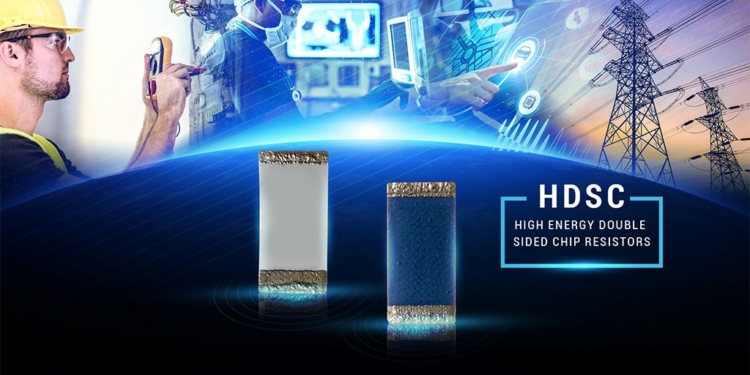Source: TT Electronics news
Woking, UK, 1 May 2019 – TT Electronics, a global provider of engineered electronics for performance critical applications, today announced high energy double sided chip (HDSC) resistors, the latest addition to its range of pulse withstanding chip resistors. HDSC chip resistors are untrimmed for improved pulse performance – the only double sided untrimmed chip resistors on the market – and are ideal for industrial and medical applications such as power supplies, circuit breakers, and medical monitor input protection.
“HDSC resistors offer unique design value by providing better surge voltage and pulse power. These are tangible advantages for circuit designers who need enhanced surge protection in a compact SMD design,” said Stephen Oxley, Senior Resistors Engineer, Applications and Marketing, TT Electronics. “HDSC’s improved surge tolerance also enhances reliability and reduces field failures in applications exposed to electrical surges, critical factors in connected health and nonstop Industry 4.0 applications.”
HDSC resistors are well-suited for replacement of large chip or multiple chip solutions used to achieve pulse withstanding. Designers can reduce size and weight whilst increasing surge protection for EMC regulatory compliance and product reliability. Their small footprint for given ratings saves PCB area, creating additional advantage for designers of compact SMD circuits in power conversion, motion control and protection applications.
TT’s HDSC resistors are available in four sizes from 0805 to 2512 and withstand up to 6.5kV peak for a 1.2/50µs surge and up to 6kW for a 0.1ms pulse. This product is designed for protection and discharge applications in compact power supplies and power control circuits where a resistance tolerance of 5% is suitable.
































